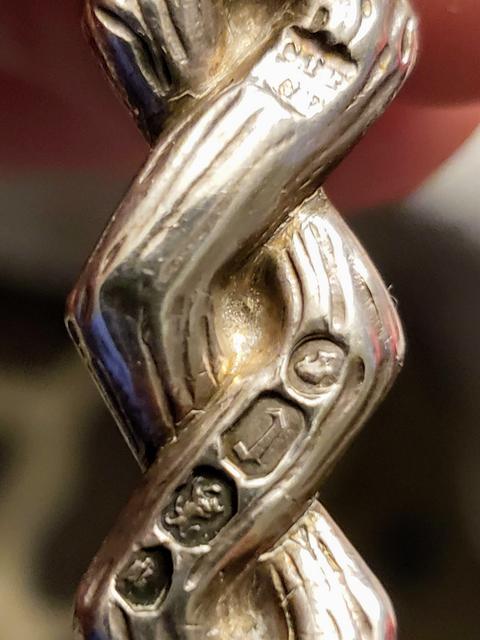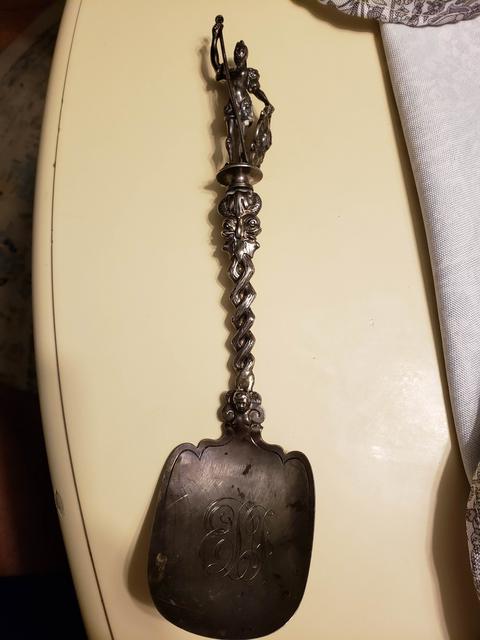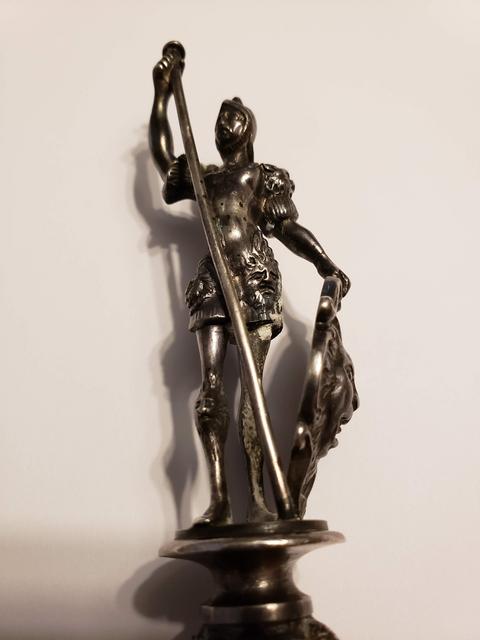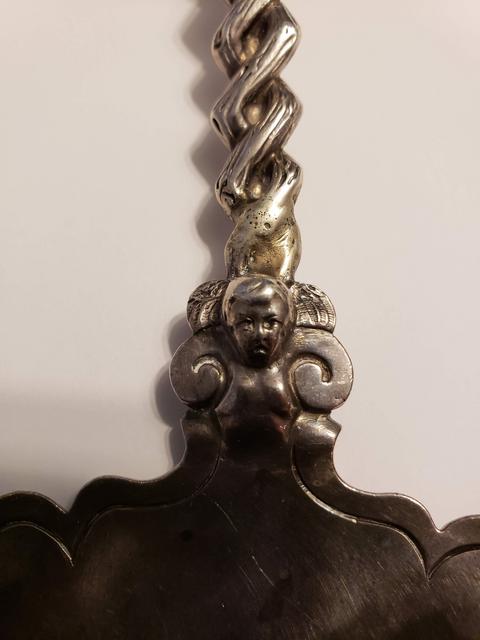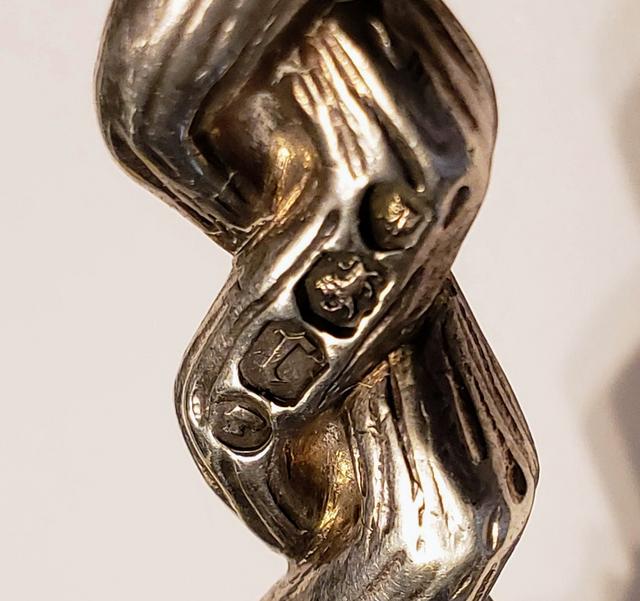Page 1 of 1
Charles Thomas Fox and George Fox serving info
Posted: Thu Jul 05, 2018 12:21 am
by cbmwlynch
Interesting serving spoon from CTF GF, but I can't make out marks beyond sterling lion. I am assuming an "l" mark for date, but it doesn't make sense for pieces by CTF GF. Bottom mark looks like an eagle, but not clear, and the top mark looks like a heart, but an anatomical one that is not symmetric. Looks like a Don Quixote figure on top, holding lion shield in left hand to left foot and long staff in right hand. I unfortunately cannot figure out a way to upload photos. Approximately 11 inches in length.
Re: Charles Thomas Fox and George Fox serving info
Posted: Thu Jul 05, 2018 2:01 am
by dognose
Hi,
Welcome to the Forum.
Your question cannot be answered without the required images.
The below should help you:
How to Add Images
Posting Requirements
https://postimages.org (copy the 'Hotlink for forums' code) is recommended.
Ensure your images are embedded. Do not post links. Remember to use the 'Preview' button before submitting your post.
For more information see:
http://www.925-1000.com/forum/viewtopic ... 82#p103282
Give some time to creating your posts and we'll give some time to researching and answering them.
Trev.
Re: Charles Thomas Fox and George Fox serving info
Posted: Fri Jul 06, 2018 6:35 pm
by cbmwlynch
Re: Charles Thomas Fox and George Fox serving info
Posted: Fri Jul 06, 2018 9:03 pm
by cbmwlynch
Re: Charles Thomas Fox and George Fox serving info
Posted: Sat Jul 07, 2018 2:28 am
by silvermakersmarks
The date letter is the lower case "c" for 1858. Charles Thomas Fox retired from the partnership in 1860 and George Fox registered a mark on his own in 1861, replacing this CTF over GF mark.
The components of the hallmark from the top in your last picture are the uncrowned leopard's head for London, lion passant sterling mark, date letter and duty mark (head of Queen Victoria).
Phil
Re: Charles Thomas Fox and George Fox serving info
Posted: Sat Jul 07, 2018 8:57 am
by cbmwlynch
Thank you Phil. Is there any way to learn more about the piece by virtue of designs (conquistador, dolphins/fish, cherub)? The only thing that my wife knows is that this silver is a family heirloom that was buried in the South during the American Civil War. The family buried it so it would not be looted by the Northern troops.
Re: Charles Thomas Fox and George Fox serving info
Posted: Sat Jul 07, 2018 9:58 am
by silvermakersmarks
I don't know how you might find out any more about the design but, just a thought, I wonder if it might be something from Greek mythology. At least a date of 1858 fits with the possibility of it being in the family during the Civil War.
Re: Charles Thomas Fox and George Fox serving info
Posted: Sat Jul 07, 2018 10:12 pm
by legrandmogol
the design is based on Dutch "sierlepels" or ornamental spoons. This is a very crisp and detailed casting in comparison though.
Re: Charles Thomas Fox and George Fox serving info
Posted: Sun Jul 08, 2018 1:00 am
by Aguest
The design of the spoon is inspired by the labors of Hercules (also see Heracles), and there are a few variations of this myth, but every Spartan warrior claimed to be descended from Hercules (Heracles).
"THE LEON NEMEIOS (Nemean Lion) was a large lion whose hide was impervious to weapons,. It plagued the district of Nemea in the Argolis. King Eurystheus commanded Herakles (Heracles) to destroy the beast as the first of his twelve Labours. The hero cornered the lion in its cave and seizing it by the neck wrestled it to death. He then skinned its hide to make a lion-skin cape, one of his most distinctive attributes."
The shield and the cape on your spoon would have immediately been recognized by the Victorian highly-educated people, both in England and America, Greek and Latin were mandatory languages to be memorized by every successful student, and they all would have known about the labors of Hercules (Heracles).
This is a superior example of the type, it does remind me of the spoons of Charles Boyton (another English silversmith who created similar figural spoons), but honestly this is a very fine example of the type. I do understand why this would have been treasured as a family heirloom (especially during wartime), it symbolizes the endurance necessary to overcome all challenges.
